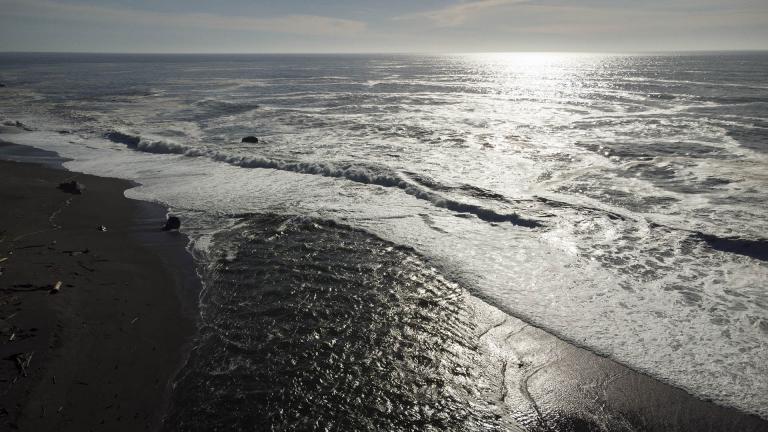
This story by ESI Journalism Fellow Alex Schwartz was originally published as part of the Project Klamath interactive website by the Herald & News, where it appears with additional photos and resources.
___________
It had been three years since Brook Thompson caught a salmon.
Growing up on the Yurok Reservation in Klamath, Calif., she used to eat it year-round — canned, smoked, boiled, pattied — benefitting from Chinook salmon’s exceptionally high protein and omega-3 fatty acid content. But the rest of Thompson’s diet consisted of flour, sugar, pasta and the occasional canned fruit or vegetable, all provided by the federal government. There was (and still is) no grocery store in Klamath. The only fresh food comes from the river.
“I didn’t get a lot of good food growing up,” said Thompson, who has Yurok and Karuk ancestry. Doctors even considered her malnourished until she moved to Portland for college. Now in a graduate environmental engineering program at Stanford University, she has access to healthier foods and grocery stores and is able to eat a balanced diet.
But Thompson said Whole Foods salmon can’t nourish her like the river can. The spiritual practice of catching a salmon near the mouth of the Klamath, cleaning it and putting it on ice can’t be replicated over a fish counter. To her, the fish just taste better at home.
“Our culture is really energy-based,” Thompson said. “You want to put that good spirit and energy into your food, and you feel that when you eat it. You put that back into yourself. Salmon tastes so bad everywhere else. I don’t know how people like it.”
Beyond nourishing its people, the salmon run can also nourish the economy of the Yurok Reservation, which has a median income of about $11,000. Thompson said a good commercial fishery could allow some tribal members to buy Christmas presents for their relatives, school supplies for their kids and even gas for their cars to be able to get to the nearest grocery store half an hour away in Crescent City.
Recently, the Yurok commercial fishery processing building at the foot of Requa Hill, along the Klamath’s estuary, has sat empty more often than not. For decades, and especially since 2015, the Klamath River fishery has been in sharp decline.
Between 2016 and 2020, the annual harvest of fall Chinook salmon has averaged fewer than 5,000 for a tribe that has more than 6,000 members. Between 1989 and 2015, tribal members had caught an average of nearly 24,000 fish a year.
“The fish are kind of the canary in the coal mine. Salmon are telling us that things aren’t working,” said Barry McCovey, the Yurok Tribe’s fisheries director and a Yurok tribal member. “Things haven’t been good for a long time — the system has been disconnected and thrown out of balance for generations — but things have gotten worse exponentially.”





